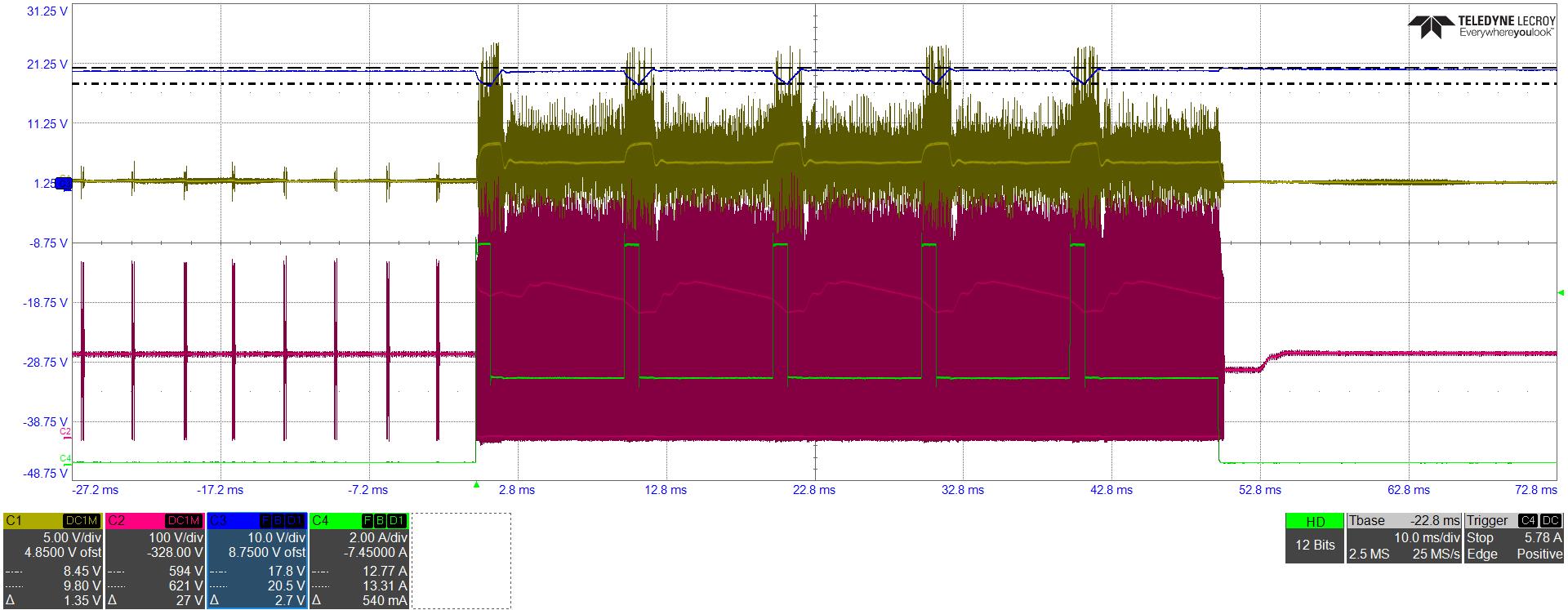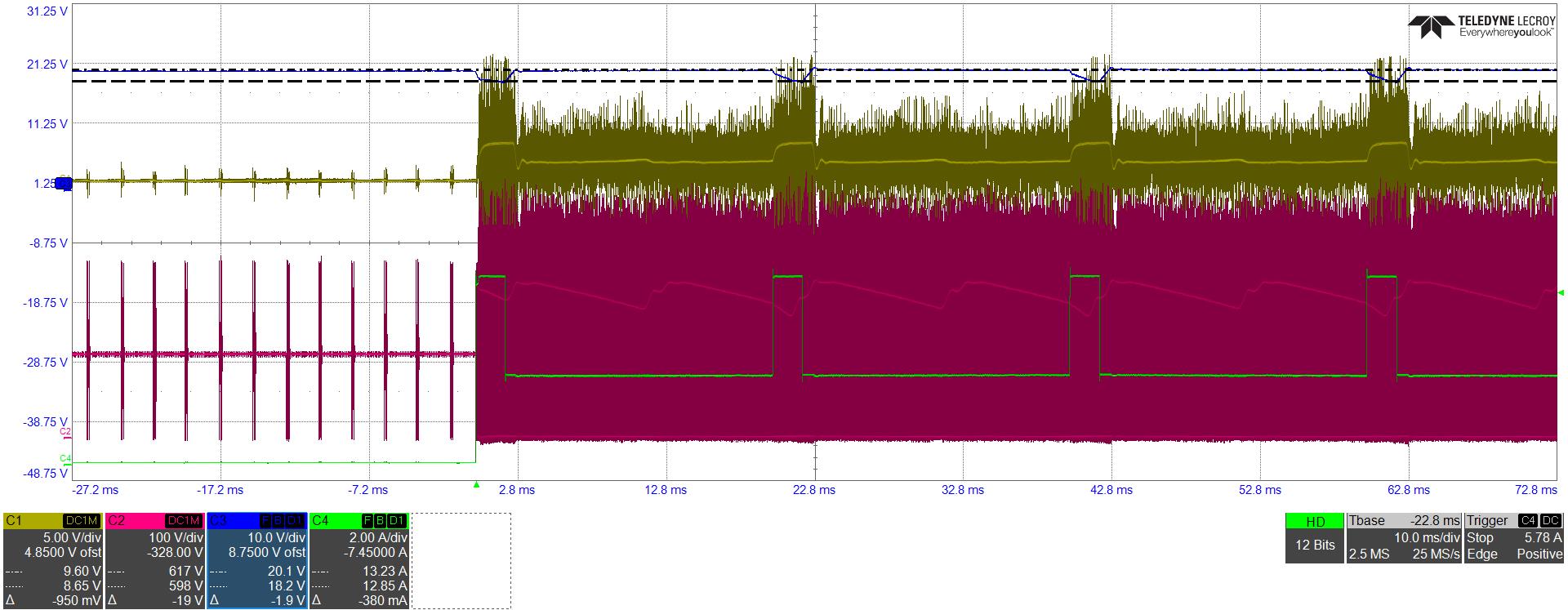SLUUD60A October 2024 – February 2025 UCG28826
- 1
- Description
- Features
- Applications
- 1Evaluation Module Overview
- 2Hardware
-
3Implementation Results
- 3.1 Electrical Performance Specifications
- 3.2 Test Setup
- 3.3
Performance Data and Typical Characteristic Curves
- 3.3.1 Efficiency Result of 4-Point Average on 20VOUT
- 3.3.2 Efficiency Result of 4-Point Average at 15VOUT
- 3.3.3 Efficiency Result of 4-Point Average at 9VOUT
- 3.3.4 Efficiency Result of 4-Point Average at 5VOUT
- 3.3.5 Efficiency Typical Results
- 3.3.6 Output Characteristics
- 3.3.7 Key Switching Waveforms
- 3.3.8 Switching Frequency vs Load
- 3.3.9 Output Ripple Voltage
- 3.3.10 Load Transient Response
- 3.3.11 Line transient Response
- 3.3.12 Surge Test
- 3.3.13 Short Term Overload Operation
- 3.3.14 CCM operation
- 3.3.15 EN55022 Class B Conducted EMI Test Result
- 3.3.16 Thermal Images at Full Load (20V and 3.25A)
- 4Hardware Design Files
- 5Appendix - Efficiency
- 6Additional Information
- 7Revision History
3.3.13 Short Term Overload Operation
The EVM is capable of supporting
short term overload without damage, safety issues or triggering protection. The output
voltage drops to 18V when peak short term overload of 6.5A is applied for 2ms (Figure 3-50) and also when 7.32A
is applied for 1ms (Figure 3-49). The results are
checked at 230Vac and 100Vac.
VSW = PINK, Load Current = GREEN, VOUT = BLUE, FB = YELLOW
The output votage drops to approximatly 18.2V
VSW = PINK, Load Current = GREEN, VOUT = BLUE, FB = YELLOW Figure 3-49 VIN=100Vac (2.25x rated
current for 1ms, 0.9x rated current for 9ms). VSW = PINK, Load Current = GREEN, VOUT = BLUE, FB = YELLOW
Figure 3-49 VIN=100Vac (2.25x rated
current for 1ms, 0.9x rated current for 9ms). VSW = PINK, Load Current = GREEN, VOUT = BLUE, FB = YELLOW
The output votage drops to approximatly 18.2V
 Figure 3-49 VIN=100Vac (2.25x rated
current for 1ms, 0.9x rated current for 9ms). VSW = PINK, Load Current = GREEN, VOUT = BLUE, FB = YELLOW
Figure 3-49 VIN=100Vac (2.25x rated
current for 1ms, 0.9x rated current for 9ms). VSW = PINK, Load Current = GREEN, VOUT = BLUE, FB = YELLOWThe output votage drops to approximatly 18.2V
VSW = PINK, Load Current = GREEN, VOUT = BLUE, FB = YELLOW Figure 3-50 VIN=100Vac (2x rated
current for 2ms, 0.9x rated current for 18ms). VSW = PINK, Load Current = GREEN, VOUT = BLUE, FB = YELLOW
Figure 3-50 VIN=100Vac (2x rated
current for 2ms, 0.9x rated current for 18ms). VSW = PINK, Load Current = GREEN, VOUT = BLUE, FB = YELLOW
The output votage drops to approximatly 18.2V
 Figure 3-50 VIN=100Vac (2x rated
current for 2ms, 0.9x rated current for 18ms). VSW = PINK, Load Current = GREEN, VOUT = BLUE, FB = YELLOW
Figure 3-50 VIN=100Vac (2x rated
current for 2ms, 0.9x rated current for 18ms). VSW = PINK, Load Current = GREEN, VOUT = BLUE, FB = YELLOWThe output votage drops to approximatly 18.2V